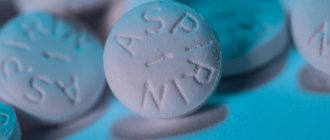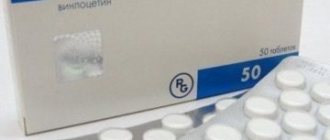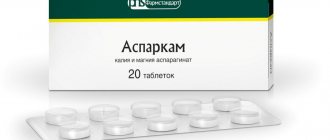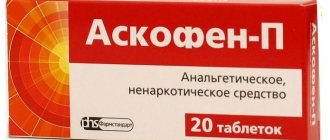High blood pressure and water treatments
For high blood pressure, in addition to medications, various procedures may also be prescribed, including the use of water methods. Their essence lies in the local effect of high temperature, which promotes the expansion of blood vessels.
In most cases, such methods are applied locally, since a sharp expansion of blood vessels throughout the body can trigger the development of collapse. A sharp dilation of cerebral vessels can increase the risk of hemorrhagic stroke.
Water treatments
Hemorrhagic stroke is an acute disorder of brain activity, which manifests itself in the form of deterioration of well-being, disorders of consciousness, even coma. Disorders of the central nervous system are extremely difficult to treat and are highly likely to lead to death.
For arterial hypertension, the following treatment methods may be prescribed:
- Foot baths. One of the most common remedies used to lower blood pressure is foot baths. To do this, pour hot water into a basin or other container. You need to lower your feet there for 10-15 minutes. The following effect is observed from the use of this technique - the vessels in the legs dilate, which leads to a redistribution of the volume of circulating blood. As a result, the pressure will decrease and blood flow to the lower extremities will increase. This reduces the risk of stroke;
- Hand baths. They can be performed simultaneously with foot baths, which will give a more pronounced hypotensive effect. They are carried out by analogy with the method described above. As an additive, you can use salt, essential oils or decoctions of medicinal herbs. Some recipes recommend using mustard. When in contact with hot water, it releases essential oils and substances that have an irritating effect on the skin, providing persistent dilation of blood vessels.
You can add various agents to the baths, which, when applied externally, help dilate blood vessels. This will provide a more pronounced therapeutic effect, which is extremely important during hypertensive crises and severe increases in blood pressure.
Baths in medical institutions
A special course of treatment with baths for high blood pressure is prescribed by specialists. It is carried out in medical hospitals (hydrotherapy institutions, sanatoriums, etc.) All prescribed procedures and therapy occur under the supervision of doctors. Before each visit, you must adhere to certain rules:
- do not drink alcohol two days before the procedures;
- have a light snack 2 hours before therapy;
- protect yourself from stress and nervous tension.
There are several types of treatment procedures:
- local bath;
- full immersion;
- partial immersion.
The procedures could be:
- The procedure is simple in fresh water, the temperature of which ranges from 35 to 38 degrees.
- Baths with mineral composition. For this purpose, sulfur, manganese, zinc and other minerals are added to the water using special equipment. These components have a relaxing effect on the body, lower blood pressure, improve blood flow, which leads to the supply of oxygen to all tissues and the brain, stabilizing the functioning of the cardiovascular system and gastrointestinal tract.
- Water treatments with medicinal herbs and aromatics. Essential oils and medicinal tinctures are mainly used.
Is it possible to take a bath with high blood pressure?
Taking a hot bath at high blood pressure is taboo. This is due to the fact that it can cause a sharp dilation of blood vessels in the internal organs and brain. This is highly likely to provoke rupture of the vessel walls.
For hypertensive patients, it is allowed to take a bath with warm or cool water. It is worth noting the fact that this water temperature has a beneficial effect on the muscles and tones them. This effect is extremely important for patients with high blood pressure, since normal muscle tone ensures normal venous outflow of blood from the periphery, which prevents the development of edema and facilitates its movement through the arteries.
Hot bath - benefit or harm
It is worth noting the fact that a cool bath in an unprepared person can cause an even greater spasm of the arterial walls, which will cause a further increase in pressure.
Important! The best option for hypertensive patients would be to take baths at an average temperature. In such a situation, the likelihood of spasm or sudden dilatation of blood vessels is almost completely eliminated.
Allowed baths for hypertension
For hypertension, patients are allowed to take baths with warm water. If hot water is used, only sitz baths can be taken with a small amount of water to cover only the lower extremities.
In such a situation, the hypotensive effect will be pronounced, and the risk of disruption of the blood supply to vital organs will be minimal.
Doctors have not come to a definitive conclusion whether a hot shower increases or decreases blood pressure, since the essence of the effect of hot water when using a shower changes relative to baths.
Such patients are also recommended to undergo contrasting water procedures. Their essence lies in the fact that the body is alternately affected by warm and cold water.
This trains the blood vessels, as they periodically relax and then become toned. This is of great importance in hypertension, associated with disruption of the vasomotor center of the medulla oblongata.
Cold and hot shower
Regular contrast showers are a natural exercise for the blood vessels. This is how muscle fibers are trained. It is worth noting that such water procedures cannot be performed with varicose veins and with a tendency to thrombosis.
Vasodilation can cause a blood clot to break off. A blood clot can lead to pulmonary embolism, thrombosis of the brain vessels or coronary vessels of the heart.
With a contrast shower, it is necessary to gradually increase the temperature difference between warm and cold water, which will enhance the therapeutic effect. Contrast water procedures strengthen the walls of blood vessels and improve the general condition of the body.
How to properly take a contrast shower for hypertension?
A contrast shower, which is often recommended for general health improvement and hardening, is a procedure that has a strong effect on the heart and blood vessels.
Due to the effects of low and high temperatures, blood circulation increases and is better supplied with oxygen.
But in hypertensive patients, such sudden changes can cause surges in blood pressure and worsen their overall well-being. Only if a number of necessary conditions are met, contrast dousing helps bring blood pressure back to normal and strengthen the immune system.
In order for a shower with alternating temperatures to have a beneficial effect on the health of a hypertensive patient, it is necessary:
- calm down, “disconnect” from problems;
- start dousing with water at a comfortable temperature and gradually increase its temperature;
- stand for a little more than 30 seconds under hot water and quickly switch to a cold tap;
- in the first weeks, do not do “water contrast” more than four times.
Remember that you need to pour over the body, not the head, and stretch your legs a little during the procedure so that the healing effect of the water reaches both feet.
You should take a shower every day - only then will your blood vessels become more elastic and your well-being will improve. In general, a contrast shower is a good measure to prevent hypertension, and not to treat it.
The mistake many people make when doing contrast douches is replacing cold water with cool water. Because of this, the body does not “turn on” its reserve defense, and the person begins to catch colds often.
You should not be afraid of discomfort from the cold: you will quickly get used to this condition, and contrasting water procedures will only invigorate you and give you pleasant sensations.
Contraindications for baths
A procedure such as a bath has a number of contraindications for which it is not recommended or prohibited to take it. Among such pathologies are:
- Increased body temperature. If you have hyperthermia, it is forbidden to take a bath, with the exception of cold baths when the temperature rises above 40 ° C. The heat transfer of the body is disrupted, which can provoke a further rise in temperature;
- Purulent skin lesions and open wounds. If the integrity of the skin is compromised, taking a bath can cause further infection, as well as tissue maceration. Such a process can cause the spread of pus through the bloodstream, and also accelerate necrotization and purulent melting of tissues;
- Inflammatory diseases of the external genitalia and anus. The inflamed area of the body is an entry point for various infections. When taking a bath during diseases of the urogenital complex, perineum or anus, bacteria from the water can penetrate into the affected tissues, which will significantly aggravate the course of the disease;
- Hypertensive crisis and significant increase in blood pressure. In such situations, baths and contrast showers can harm a person. In such a situation, it is more advisable to use foot or hand baths, which will help lower blood pressure;
Hypertensive crisis
- Allergies. If baths or baths are carried out using additives, then you should approach such procedures carefully. Essential oils often cause allergic reactions. The most common form of presentation is urticaria;
- Pregnancy. It is impossible to lower blood pressure using hot baths during pregnancy, as there is a risk of miscarriage. The water should only be at a temperature in which the woman feels comfortable.
Important! If a person is planning to engage in hydrotherapy, then it is necessary to consult not only a therapist, but also a physiotherapist. This is necessary in order to create a comprehensive treatment regimen that will include medication and physiotherapeutic methods.
Video on the topic
About ways to prevent the development of hypertension in the video:
Try to keep your life calm - without negativity and worries. After all, physical health is inseparable from psychological comfort.
The information on the MyMedNews.ru website is for reference and general information, collected from publicly available sources and cannot serve as a basis for making a decision on the use of medications in the course of treatment.
MyMedNews.ru
And we also have
Blood pressure in adolescents: normal values by age, causes of deviation and stabilization of indicators
Bath recipes for hypertension
There are many folk bath recipes that are recommended for high blood pressure. Most of them have no scientific confirmation, and the principle of their action is not clear. So, the most popular recipes are:
- Baths with the addition of carrot and beet juice. Juice from beets and carrots is added to warm water, squeezed out and infused in a cool place for at least 8 hours. Another special feature is that the ratio of beet and carrot juices should be 1:4. Some sources claim that the effect of these juices when applied externally stimulates vasodilation, but there is no scientific basis for this fact;
- Bath with blackcurrant infusion. To prepare a decoction, you need to take leaves and berries in equal proportions and mix them. The correct ratio must be observed - for 1 liter of water, 4 tablespoons of the resulting mixture. In order to prepare the bath, you need to prepare 2 liters of decoction and dilute it in water, after filtering it. It is simmered over low heat for half an hour after boiling. It is recommended to do such baths every 2 days. The duration of one session should not exceed 20 minutes;
- Low pressure. If the patient has low blood pressure, it must be raised. It will rise only when exposed to low temperatures, and hot water can only aggravate the condition. If the pressure drops further, it will cause deep tissue hypoxia, which can cause ischemic stroke or disorders of the internal organs.
The effectiveness of such baths is questionable. External use of juices does not have any effect on the body. As for blackcurrant decoction, its effect when applied externally also has no scientific basis.
It is worth giving preference to a contrast shower, foot or hand baths, which will bring more benefits to the body.
Foot baths
Important! If a person decides to take baths with mustard, then the duration of such a procedure should not exceed 10 minutes. Mustard is capable of releasing aggressive substances that, with prolonged exposure, cause damage to the surface layer of the skin.
Baths for hypertension in health care facilities
When staying in a medical institution, hydrotherapy can be prescribed for therapeutic or preventive purposes.
In medical institutions, the following types of baths can be performed for patients with hypertension and to prevent its development:
- Regular baths with vibration massage. The essence of such a bath is that, in addition to heat, the body is affected by vibration, which relaxes not only the muscles, but also the spasmodic walls of blood vessels, which facilitates the movement of blood through them. The duration of such a procedure usually does not exceed 20 minutes, and the effect of use is observed within several hours, in the form of lowering blood pressure and relaxing the body;
- Mineral baths. The skin is capable of absorbing moisture and small particles. When carrying out mineral baths, the body is saturated with various microelements that are necessary for the normal functioning of the heart muscle and the contractility of blood vessels. This procedure is extremely important if there is a low level of potassium and magnesium in the body. Increasing the levels of these minerals in the blood helps normalize the force of heart contractions;
- Baths with herbal ingredients. To prepare such baths, plants that have a calming effect are usually used. This helps to relax the body and reduce the heart rate, which is extremely important for high blood pressure;
- Hydrogen sulfide baths. One of the best means of preventing hypertension is hydrogen sulfide baths, which are widely used in health resort institutions. Hydrogen sulfide helps thin the blood and reduce the resistance of blood vessels to blood pressure.
Regular hydrogen sulfide baths reduce the risk of developing hypertension several times. Hydrogen sulfide is considered a toxic substance, but when used in small doses it has a beneficial effect. It relaxes all the smooth muscles that are also found in the arteries.
Baths for hypertension are a good way to temporarily lower blood pressure and prevent its rise. It is necessary to choose the right temperature, since hot water can provoke the development of severe complications of hypertension.
What water procedures are useful for low blood pressure?
People suffering from hypotension are allowed to use most types of baths. A procedure using pine decoction will also be useful. It has a positive effect not only on blood pressure levels, but also on the condition of the patient’s skin. Blood pressure rises when taking a bath with hot water, but no less effective is the use of contrast showers, which are also useful for hypertension. A good effect for patients with low blood pressure comes from adding honey, rowan, tansy decoction, green tea, mint and lavender to the water. Water procedures are used for preventive purposes when there is a risk of pathological pressure fluctuations. In combination with a healthy lifestyle, medicinal baths will strengthen the body and prevent other diseases of the cardiovascular system.











